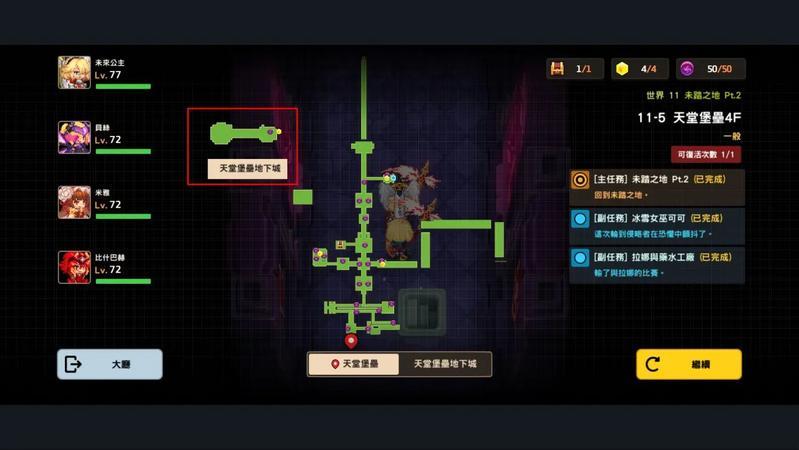Positional Encoding高频位置编码
时间:2025-07-29 作者:游乐小编
本文围绕位置编码(Positional Encoding)在神经网络拟合图片中的作用展开实验。通过PaddlePaddle构建NeRF2D神经网络,分别在不使用和使用位置编码的情况下,以坐标预测像素RGB值。对比发现,加入含三角函数的位置编码后,拟合结果更清晰,验证了其提升神经网络表示能力的效果。

Positional Encoding 高频位置编码
Positional Encoding 是神经网络设计的常用技巧。 例如 NeRF 提到, 用一个神经网络来表示一个场景。给定任何一个像素点的坐标(和观察方向)作为输入,神经网络输出这个点的像素值。但是, 如果输入只是单纯的坐标, 则神经网络表示的场景往往比较模糊. 但是如果额外输入坐标的多个三角函数值,
[sin(x),sin(2x),sin(4x),sin(8x),...,cos(x),cos(2x),cos(4x),cos(8x),...]
则所得到的结果可能会更加清晰。这被称为位置编码 (positional encoding)。
本项目利用 PaddlePaddle 做一个2D版本的简单实验 (这个实验在 CVPR 2020 Tutorial 的视频中提到):
已有一张图片, 用一个神经网络拟合它:对于任意一个点的二维坐标 (x,y), 输出(预测)图片在 (x,y) 处的像素值 (r,g,b). 如果加入位置编码 (positional encoding), 则输入变成了
[x,y,sin(x),sin(y),sin(2x),sin(2y),...,cos(x),cos(y),cos(2x),cos(2y),...]
输出图片在该点的 RGB 值。
并比较不加入与加入位置编码的两种方法清晰度。
本 notebook 执行用时 (用AI Studio的V100 32GB) < 10分钟
下图范例来自CVPR 2020 Tutorial, 左边是真实图片, 中间是不用位置编码的神经网络拟合结果, 右边采用了位置编码更加清晰。
本项目将复现类似的结果。
In [2]
import paddlefrom matplotlib import pyplot as plt import numpy as np from tqdm import tqdm from PIL import Image
准备工作
很少有更简单的数据准备工作了——随便找一张图片即可。
In [51]
# 随便找一张图片, 放进项目的文件夹里并用 Image 库打开img = Image.open('work/example1.jpg')img = np.array(img)print(img.shape)plt.figure(figsize=(5,7))plt.imshow(img) (960, 720, 3)
In [14]
# 类似 NeRF 的想法, 用一个神经网络表示图片:给一个像素坐标 (x,y), 预测该像素点的 RGB 值。# 神经网络简单地用若干 Linear 层 和 ReLU 激活函数堆叠而成。class NeRF2D(paddle.nn.Layer): def __init__(self, input_size: int = 2, layers: int = 5, hidden_size: int = 256): super().__init__() assert layers >= 2, 'MLP should have at least 2 layers.' input_size :int = input_size # 2d 输入: 像素坐标 (x,y) output_size:int = 3 # 3d 输出: 坐标的对应RGB值 (R,G,B) # 保存一些参数 self.input_size = input_size self.output_size = output_size self.layers = layers # 用一个 Layerlist 存放所有层 self.mlps = paddle.nn.LayerList() mlp_dim = [input_size] + [hidden_size] * (layers - 1) + [output_size] for layer in range(layers): # 全连接层 self.mlps.append( paddle.nn.Linear(mlp_dim[layer], mlp_dim[layer+1]) ) # ReLU层 self.mlps.append(paddle.nn.ReLU()) def forward(self, x): # 让 x 通过所有层 for layer in range(self.layers * 2): x = self.mlps[layer](x) return x
不使用 Positional Encoding
用 F(x,y) 表示神经网络函数 ((x,y) 是输入), 则损失函数为神经网络的预测 F(x,y) 与真实图片的像素值 RGB(x,y) 的差距 (L2 损失)。
L=N1all pixels (x,y)∑(F(x,y)−RGB(x,y))2
In [29]
w , h = img.shape[0], img.shape[1]pi = np.pi # 将 w*h 个像素坐标 (x,y) 作为输入# 这里不妨将图片看成 [-pi/2, pi/2] x [-pi/2, pi/2] 的坐标系# (因为神经网络的输入和输出最好不要太大, 每个值 <= 1 比较好)inputs = paddle.zeros((w,h,2))inputs[:,:,0] += paddle.linspace(-pi/2, pi/2, num=w).reshape((w,1)) # 纵坐标inputs[:,:,1] += paddle.linspace(-pi/2, pi/2, num=h).reshape((1,h)) # 横坐标# 输入相当于 w*h 条二维数据 (输入不是很大, 可以一次性全部计算, 不需要 batch)inputs = inputs.reshape((w*h, 2))# 作为参照的, 期望的输出是 w*h 个像素的 RGB 值, 即图片本身outputs = paddle.to_tensor(img, dtype='float32').reshape((w*h, 3))outputs = outputs / 255. # 由于网络最后是 ReLU, 所以期望的输出应该 >= 0, 最好介于 [0,1]
In [44]
# 创建一个神经网络, 用 Adam 优化器net = NeRF2D()opt = paddle.optimizer.Adam(parameters = net.parameters())losses = []
In [45]
# 训练 2000 步 (3分钟左右)epochs = 2000for epoch in tqdm(range(len(losses)+1, len(losses)+epochs+1)): render = net(inputs) # (w*h, 3) # 将神经网络根据坐标预测的渲染 (render) 结果与原图片对比, 用 L2 损失作为损失函数 loss = paddle.mean(paddle.square(render - outputs)) losses.append(loss.item()) # 反向传播+梯度下降 opt.clear_grad() loss.backward() opt.step()
100%|██████████| 2000/2000 [03:06<00:00, 10.70it/s]
In [46]
# 观察 loss 曲线 和 最后一次渲染的结果, # 神经网络生成的图片有模有样, 缺点是比较模糊plt.figure(figsize=(12,7))plt.subplot(1,2,1)plt.semilogy(losses)plt.subplot(1,2,2)plt.imshow(render.reshape((w,h,3)))
Clipping input data to the valid range for imshow with RGB data ([0..1] for floats or [0..255] for integers).
使用 Positional Encoding
使用了 Positional Encoding, 即将每个输入从 (x,y) 变成
[x,y,sin(x),sin(y),sin(2x),sin(2y),...,cos(x),cos(y),cos(2x),cos(2y),...]
这里我们最高取到 20,21,22,23,24 倍.
In [39]
# 接下来是使用 Positional Encoding 的改进# 这时候每个输入不再是 2 维的 (x,y)# 而是多维的 (x,y,sinx,siny,cosx,cosy,sin(2x),sin(2y),cos(2x),cos(2y),...)positional_encoding = [inputs]freqs = [1.,2.,4.,8.,16.]for freq in freqs: positional_encoding.append(paddle.cos(inputs * freq)) positional_encoding.append(paddle.sin(inputs * freq))positional_encoding = paddle.to_tensor(positional_encoding, dtype='float32') # shape = [1+2*Freqs, w*h, 2]positional_encoding = positional_encoding.transpose((1,2,0)).reshape((w*h, -1))print(positional_encoding.shape)
[691200, 22]
In [41]
# 再创建一个神经网络, 这次每条输入的维度是 22net = NeRF2D(input_size = positional_encoding.shape[1])opt = paddle.optimizer.Adam(parameters = net.parameters())losses = []
In [42]
# 训练 2000 步 (3分钟左右)epochs = 2000for epoch in tqdm(range(len(losses)+1, len(losses)+epochs+1)): render = net(positional_encoding) # (w*h, 3) # 将神经网络根据坐标预测的渲染 (render) 结果与原图片对比, 用 L2 损失作为损失函数 loss = paddle.mean(paddle.square(render - outputs)) losses.append(loss.item()) opt.clear_grad() loss.backward() opt.step()
100%|██████████| 2000/2000 [03:08<00:00, 10.62it/s]
In [43]
# 观察 loss 曲线 和 最后一次渲染的结果, 可以看出比不用 positional encoding 要清晰很多plt.figure(figsize=(12,7))plt.subplot(1,2,1)plt.semilogy(losses)plt.subplot(1,2,2)plt.imshow(render.reshape((w,h,3)))
Clipping input data to the valid range for imshow with RGB data ([0..1] for floats or [0..255] for integers).
小编推荐:
热门推荐
更多 热门文章
更多 -

- 神角技巧试炼岛高级宝箱在什么位置
-
2021-11-05 11:52
手游攻略
-

- 王者荣耀音乐扭蛋机活动内容奖励详解
-
2021-11-19 18:38
手游攻略
-

- 坎公骑冠剑11
-
2021-10-31 23:18
手游攻略
-

- 原神卡肉是什么意思
-
2022-06-03 14:46
游戏资讯
-

- 《臭作》之100%全完整攻略
-
2025-06-28 12:37
单机攻略
























